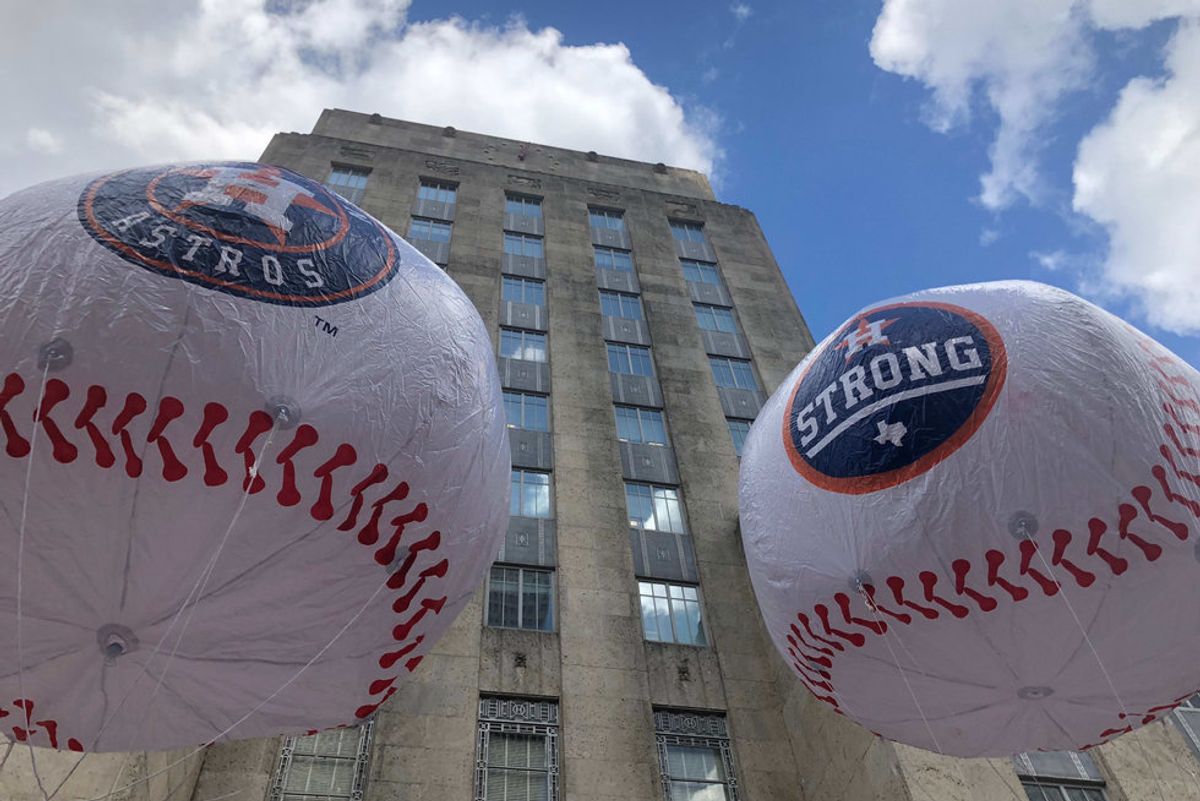ROOT FOR THE HOME TECH
Astros executive addresses innovations in sports
Jun 18, 2019, 4:01 pm
ROOT FOR THE HOME TECH

This article originally appeared on InnovationMap and was written by Natalie Harms.
Over the past decade or so, sports franchises have seen a boom in technology integration. The fact of the matter is that both the teams and the players need to tap into tech to have a competitive advantage on the field — and especially when it comes to the business side of things.
"Technologically advanced companies want to do business with technologically advanced companies," says Matt Brand, senior vice president of corporate partnerships and special events at the Houston Astros. "Old cats like me need to realize you have to stay current or else you're just going to get passed up."
Brand was the subject of a live recording of HXTV — the video arm of Houston Exponential — at The Cannon. He addressed several trends in sports technology, and shared how the Astros are approaching each new hot technology.
The Astros are pretty ahead of the curve when it comes to technology, Brand says, and the trick is keeping a pulse on potential game-changing technology far in advance of implementation.
"The things that we're developing now in 2019 and 2020 are the thing that are going to help us in 2024 and 2025," Brand says.
The approach to technology in sports is changing as younger players enter the scene.
"This generation of players want all the technology they can get," Brand says. "They want what's going on up to the day."
From esports to sports betting sites, here's what the hometeam has on its radar, according to brand.
One aspect of the game that's been greatly affected by technology is pitching. Brand says that pitching coach, Brent Strom, is better able to do his job nowadays that there's better quality video and monitoring technologies. Brand cited the transformations of former pitcher Charlie Morton and current pitcher Ryan Pressly. Both saw impressive transformations in their pitching ability thanks to Strom and his technology.
"Brent has the ability to take technology and blend it with the craft," Brand says.
One way the franchise thinks about its players is as machines — in the least objectifying way, surely. But Brand compares baseball players to major, expensive oil and gas machines, and in heavy industry, it's very common for a company to drop $30 million or more on a machine. Of course the company would schedule preventative maintenance and service appointments to protect their investments.
"We've got players now who are high performance machines," Brand says, citing players like Justin Verlander. "We want to make sure we have the best technology and the best care around them."
From doctors and nutritionists to the latest and greatest technologies, implementing the best practices is a good way to protect your assets.
Another trend within sports is tracking sleep using technology. Wearable devices to track sleep and health are widely used, says Brand, but the Astros weren't comfortable with the constant monitoring.
"They feel like it's an invasion of privacy," Brand says. They feel like the data would be used against them when it came time to negotiate their contracts.
But prioritizing sleep is crucial in a sport where players travel across the country playing 162 games a season. Brand says investing in the players' sleep equipment is something they make sure to do.
Brand says, somewhat controversial, that esports is pretty low on the franchise's priority list, and there's one reason for that: Money.
Continue reading on InnovationMap to learn about a movement coming in marketing and betting within sports.
Oswald Peraza hit a two-run single in the ninth inning to help the Los Angeles Angels snap a three-game losing skid by beating the Houston Astros 4-1 on Saturday night.
Peraza entered the game as a defensive replacement in the seventh inning and hit a bases-loaded fly ball to deep right field that eluded the outstretched glove of Cam Smith. It was the fourth straight hit off Astros closer Bryan Abreu (3-4), who had not allowed a run in his previous 12 appearances.
The Angels third run of the ninth inning scored when Mike Trout walked with the bases loaded.
Kyle Hendricks allowed one run while scattering seven hits over six innings. He held the Astros to 1 for 8 with runners in scoring position, the one hit coming on Jesús Sánchez’s third-inning infield single that scored Jeremy Peña.
Reid Detmers worked around a leadoff walk to keep the Astros scoreless in the seventh, and José Fermin (3-2) retired the side in order in the eighth before Kenley Jansen worked a scoreless ninth to earn his 24th save.
Houston’s Spencer Arrighetti struck out a season-high eight batters over 6 1/3 innings. The only hit he allowed was Zach Neto’s third-inning solo home run.
Yordan Alvarez had two hits for the Astros, who remained three games ahead of Seattle for first place in the AL West.
Peraza’s two-run single to deep right field that broke a 1-1 tie in the ninth.
Opponents were 5 for 44 against Abreu in August before he allowed four straight hits in the ninth.
Astros RHP Hunter Brown (10-6, 2.37 ERA) faces RHP José Soriano (9-9, 3.85) when the series continues Sunday.
